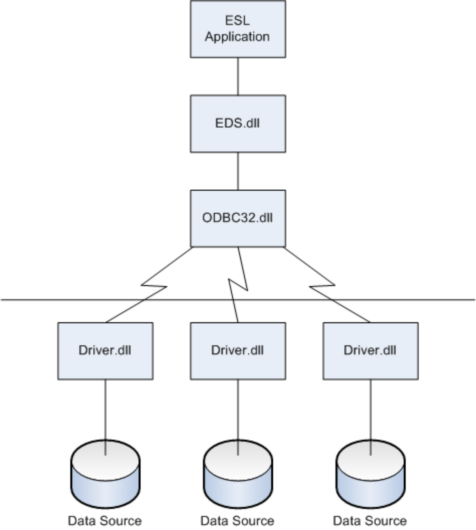The EDS environment consists of the following components:
Component |
Description |
ESL Application |
Performs processing on behalf of a user. Calls EDS commands to submit SQL requests and retrieve results. |
EDS |
Accepts requests from the ESL application. Translates arguments from ODBC types to ESL types. Calls the ODBC command that corresponds to the EDS command. Defines variables and data formats for the results. Processes errors. Returns results to the ESL application using ESL data types and communication conventions (e.g., stimulus events). |
ODBC Driver Manager |
Maps a data source name to a specific driver DLL. Provides initial EDS allocation cells. Provides parameter and sequence validation for EDS calls. Loads the database driver on behalf of the application. |
Driver |
Processes EDS subroutine and function calls, submits EDS requests to a specific data source, and returns results to the EDS application. |
Data source |
Consists of the data the user wants to access and its associated operating system, DBMS, and network platform (if any) used to access the DBMS. |
The EDS subroutines, the ODBC Driver Manager, and the Driver appear to the ESL application as one unit that processes SQL statements. EDS sends calls to and receives data from the ODBC Driver Manager. The Driver Manager communicates with a database driver that is specific to the DBMS. Figure 1-1 shows the relationship between these major components.

Figure 1-1: EDS Components.